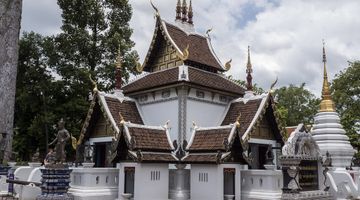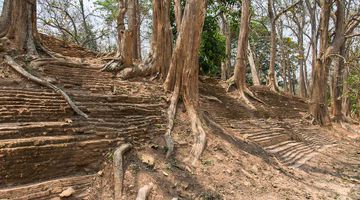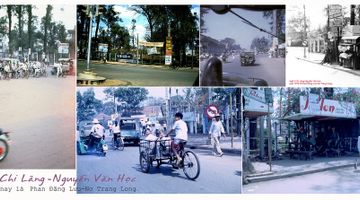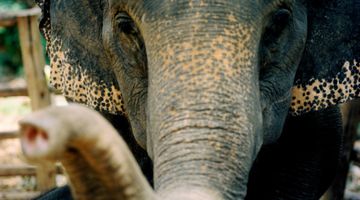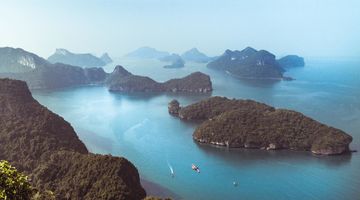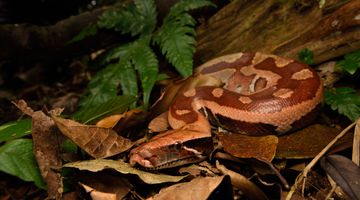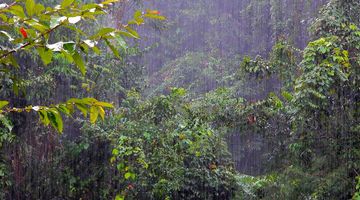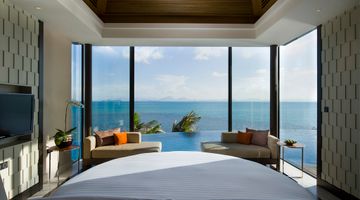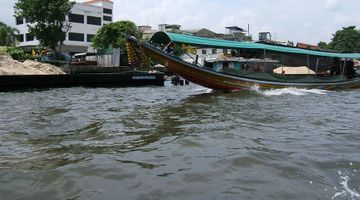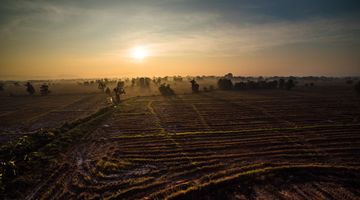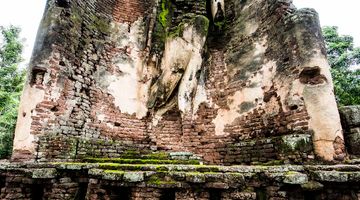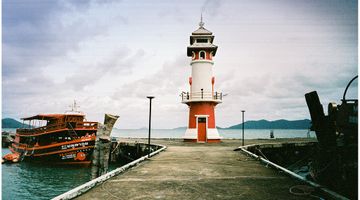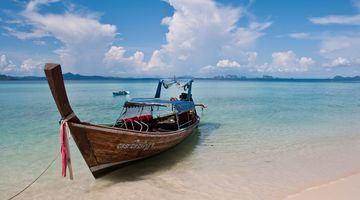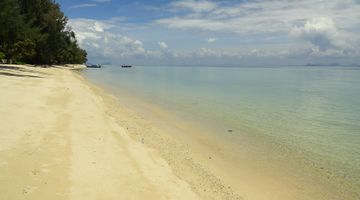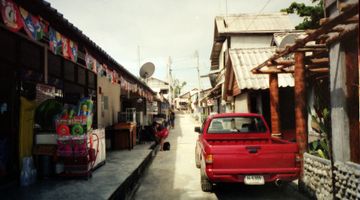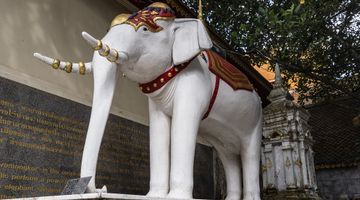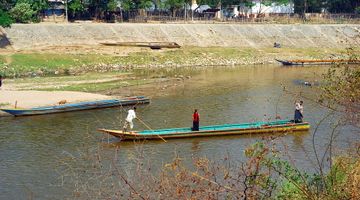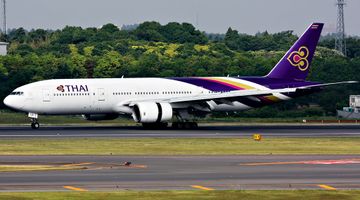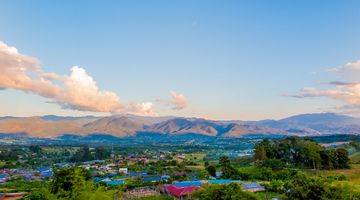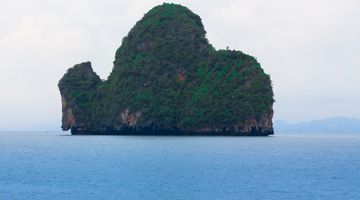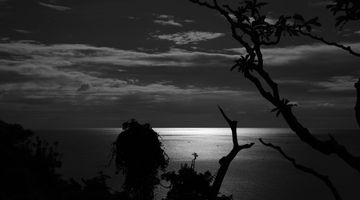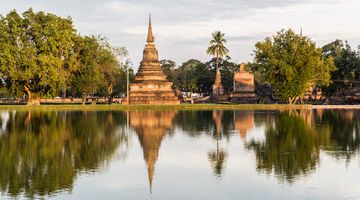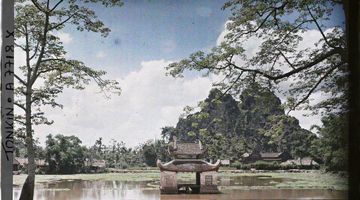Tak Travel Guide
Ina nutshell
Tak is a small provincial capital town in the northwest of Thailand seeing only few Western tourists who decide to stop for a night there before heading further to Myanmar.
Why go to Tak
Yet Tak is arguably one of the best places in the whole country to experience some genuine and authentic atmosphere of a small town which lives its life without thinking too much about hordes of Western tourists. The slow-pace everyday life of this river town is appealing and enjoying some great authentic cheap food while watching the sunset over the Ping River is probably the most popular activity among the locals. Few temples and historical attractions in town will probably keep you busy for no more than a day.
Tak in fact has a long history dating back to Sukhothai period, but almost nothing is left from those times. The majority of tourists coming to Tak are the Thais who want to pay respect to the shrine of King Taksin the Great who saved the town and the whole country form the Burmese invasion back on 18th century.
But if you have a few extra days to spend, Tak will be a surprisingly pleasant discovery and a convenient stop on your way to the western part of the province, where the border town of Mae Sot welcomes everyone with its unique multi-ethnic atmosphere, or to the natural wonders, one of which, Thi Lor Su Waterfall, can be easily considered as one of the most spectacular waterfalls on our planet.
When to go to Tak
The rainy season running from June to October shouldn’t stop you from visiting Tak or the border town of Mae Sot. But if you’re planning to see Thi Lo Su Waterfall in Umphang district keep in mind that during last few years the Wildlife Sanctuary where the waterfall is located wasn’t accessible during the rainy season due to poor quality of roads – or rather their absence – and in general trekking in that area can be quite dangerous as strong storms and flash floods are common.
From November to February the temperature is a bit cooler and there no rain thanks to what it is a perfect time to go exploring the national parks all around the province.
If visiting in the beginning of November don’t miss Loy Krathong Festival; Tak is considered one of the best places in Thailand to celebrate Loy Krathong and yearly attracts a lot of local tourist.
Where to stay in Tak
Tak doesn’t offer either Westert tourists oriented guesthouses nor any backpackers’ style accommodation. Nevertheless, a few affordable hotels with cheap fan rooms and private bathrooms can still be found in the city centre within a walking distance from the river and everything else that Tak has to offer. There are similarly limited offer in the higher category, but one new boutique hotel and one quite aged luxury veteran are never ful, anyway. Reservation is not necessary unless you are coming to town during Loy Krathong Festival.
Where to eat in Tak
A variety of street food will make your visit to Tak tasty and delicious. Traditional Thai food and local specialties are sold from many food stalls or at one of the day or night markets, and everything comes cheap and tastes great. The riverfront is the right place to search for a more comfortable restaurant with great views over the Ping River and to try some of the local freshwater fishes. There is virtually no choice for those who can’t make it without western food.
How to around Tak
The city centre is small enough to easily walk around everywhere. Everything which is worth visiting is located on the Eastern bank of the Ping River and the pedestrian bridge is a convenient landmark making it impossible to get lost in Tak. Tuk-tuks are available to take you to and from the bus station or in case you choose to sleep outside of town.
At Soho Boutique Hotel there are bicycles for rent, while at the moment of writing there’s no place in town to rent a motorbike or a car.
How to get to and from Tak
There’s no airport in town; the closest airport is located in Mae Sot, two hours away from Tak, and it’s served by a daily flight from Bangkok by Nok Air. Expect to pay THB1200 for a one-way ticket.
Mae Sot is connected by a minivan service to Tak with frequent departures (every half an hour); tickets cost THB90 and it takes 2 hours.
The bus station in Tak is located in the north-eastern part of town, 3 km away from the river and the bridge. Tuk-tuks are always available to take you anywhere in town for roughly THB60. Quite surprising for such a small and remote province capital, Tak is well connected with several destinations around the country by bus.
Buses from Bangkok to Tak depart from Morchit Bus Terminal very frequently throughout the day from 7:00am. Catching a bus in the morning will let you get to Tak in the afternoon with enough time to search for abode for a night and get ready for dinner. The trip in fact takes 7 hours and tickets start at THB280 and go up to THB 450 for a VIP bus.
If heading north, several buses daily head to Chiang Mai and Chiang Rai and cost respectively THB150 and THB200. These journeys take 4 and 7 hours.
If Isaan provinces are your next destination, frequent buses leave for Khon Kaen (8 hours). Tickets start at THB280.
A devastatingly long 18-hour bus journey brings you as far as Phuket with one daily direct bus departing at 8:00pm.
Among the other destinations served by direct buses from Tak there are Kanchanaburi, Kamphaeng Phet and Sukhothai.
Tak can also be easily reached by car and it’s actually a pleasant and straightforward journey offering interesting stops in Ayutthaya and Kamphaeng Phet. The total trip shouldn’t take more than 6 hours.
Is Tak a safe place to visit?
Tak is a safe town to travel even if the lack of English speaking locals can sometimes make you feel a little bit uncomfortable.
The main dangers in the area are flash floods during the monsoon season and mosquito-borne diseases like dengue fever. We’ve never heard of any tourist getting malaria in Tak, yet the area is considered malaria-prone. For any emergency there is a hospital in town.
If visiting the southern part of the province we would recommend everyone to join a guided tour for your hiking or trekking expeditions.




